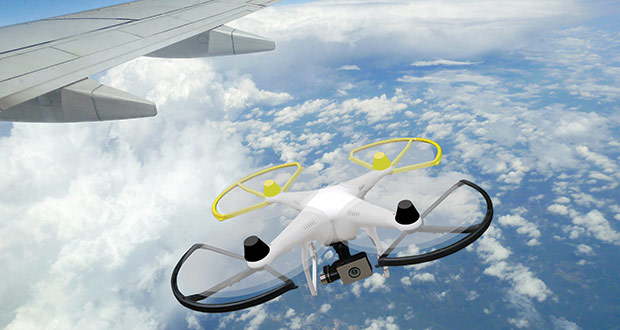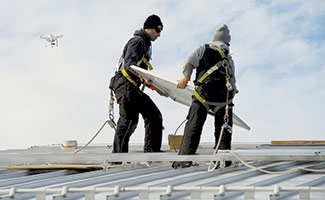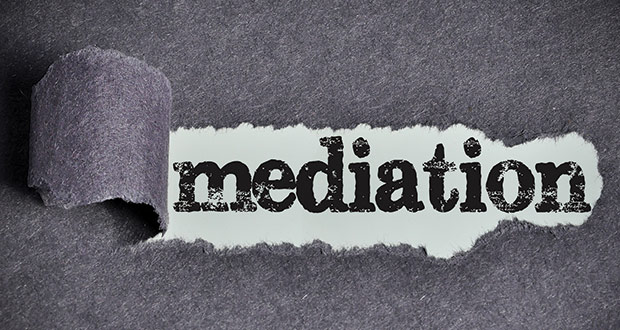Drone users: May I see your license, please?
By: WISCONSIN LAW JOURNAL STAFF//December 30, 2015//

By Brad Boyd
Special to the Wisconsin Law Journal
Pressures are mounting for everyone involved in the unmanned-aircraft industry, as increasingly severe penalties and new registration requirements force recreational and commercial users of drones and similar devices to adapt to evolving laws and regulations.
With a recent $1.9 million penalty levied for improper drone use, together with the FAA’s expected registration requirements, those who fly drones for business or pleasure may find that failure to follow the changing rules can have severe consequences.
Close calls with aircraft continue to expose a significant public-safety concern. According to one source, by mid-year 2015, there were more than 700 reports of pilots citing close calls with UAS. That tripled the number of reports in 2014. As a result, the law of the sky is in flux. The Federal Aviation Administration is scrambling to adopt a registration system and rules that promote responsible use of drones, while demanding accountability from those who don’t follow those rules.
In February, there were around 20 Section 333 exemptions, which are the FAA authorization to fly UAS for commercial purposes. It is clear that the FAA has since devoted many of its resources to this technology: A mere nine months later, the number of exemptions has risen to above 2,200.
Meanwhile, consumer drones are expected to be in high demand during the 2015 holiday shopping season. Some sources estimate 700,000 will be sold in 2015 alone. Recreational and hobby users are not exempt from UAS requirements and risks.

If you are giving or receiving a drone as a holiday gift, visit KnowBeforeYouFly.org to get familiar with basic rules of operation before taking to the skies. The FAA is even collaborating with the National Football League to get the word out, relying heavily on a public advocacy message on YouTube.
An increasing number of commercial and hobby users means increased risk to commercial and general aviation, which explains the FAA’s urgency in creating systems that allow users to be identified and monitored.
What will be done to mitigate risks posed by UAS?
The current approach appears to be two-fold: 1) publishing rules regarding registration, licensing and operation, and 2) imposing severe penalties coupled with stronger enforcement. Not only has the FAA quickly scaled the above-mentioned Section 333 exemption process. It has also launched a registration system.
Registration requirements
This month, the FAA assembled a task force to develop requirements for registering drones. FAA Administrator Michael Huerta set the stage for the task force meetings with a comment that should resonate with anyone who understands the importance of blending risk management with having the sort of freedom that lets technology advance.
“There’s no single solution for how we do this,” Huerta said. “The integration of unmanned aircraft is multi-faceted, and our approach must be as nimble as the technology itself.”
On Nov. 21 an FAA press release identified that this task force delivered its recommendations to the FAA, and that the FAA will present recommendations to U.S. Secretary of Transportation Anthony Foxx. One report from a task force member suggests FAA officials would like to adopt a registration system within the next 30 days, and that the system could be a fairly simple process, and may even occur online.
Increasing enforcement, penalties for past acts
Noteworthy FAA enforcement actions against drone operators have been few and far between. We’ve moved from a proposed $10,000 fine against Raphael Pirker to a proposed $1.9M fine, announced in October, against SkyPan.
The SkyPan penalty should catch the attention of all commercial UAS operators, as it is aimed at the past acts of SkyPan. Specifically, it stems from 65 unauthorized flights that occurred from March 2013 through December 2014. Unlike the “free pass” a speeding motorist may receive if a speeding violation wasn’t caught in real time, an operator of an improper UAS flight may be penalized after the flight.
It’s increasingly evident that anyone who wants to fly drones recreationally will need to understand the basic rules of safe operation and recognize that registration and insurance requirements are evolving. At the same time, commercial and business users have a greater level of responsibility and accountability. Organizations and businesses that use UAS should be particularly familiar with UAS registration requirements and the changing set of laws and regulations that govern use.
To reiterate the remarks of the FAA administrator, the UAS technology is indeed nimble. All of us, whether businesses, regulators, consumers or advisers involved in the UAS industry, must be responsive and pragmatic in our attempts at balancing the overlapping and often competing interests of the UAS industry.
Legal News
- Wisconsin joins Feds, dozens of states to hold airlines accountable for bad behavior
- Trump ahead of Biden in new Marquette poll
- Bankruptcy court approves Milwaukee Marriott Downtown ‘business as usual’ motion
- New Crime Gun Intelligence Center to launch in Chicago
- Arrest warrant proposed for Minocqua Brewing owner who filed Lawsuit against Town of Minocqua
- Wisconsin Supreme Court justices question how much power Legislature should have
- Reinhart named the 2024 Wisconsin law firm of the year by benchmark litigation
- Milwaukee’s Common Council now has the most African Americans, women and openly LGBTQ members ever
- Office of School Safety Provides Behavioral and Threat Assessment Management Training Ahead of 25th Anniversary of Columbine Shooting
- Wisconsin Supreme Court to hear arguments in Democratic governor’s suit against GOP-led Legislature
- Lawsuit asks Wisconsin Supreme Court to strike down governor’s 400-year veto
- Wisconsin man pleads not guilty to neglect in disappearance of boy
WLJ People
- Power 30 Personal Injury Attorneys – Russell Nicolet
- Power 30 Personal Injury Attorneys – Benjamin Nicolet
- Power 30 Personal Injury Attorneys – Dustin T. Woehl
- Power 30 Personal Injury Attorneys – Katherine Metzger
- Power 30 Personal Injury Attorneys – Joseph Ryan
- Power 30 Personal Injury Attorneys – James M. Ryan
- Power 30 Personal Injury Attorneys – Dana Wachs
- Power 30 Personal Injury Attorneys – Mark L. Thomsen
- Power 30 Personal Injury Attorneys – Matthew Lein
- Power 30 Personal Injury Attorneys – Jeffrey A. Pitman
- Power 30 Personal Injury Attorneys – William Pemberton
- Power 30 Personal Injury Attorneys – Howard S. Sicula










